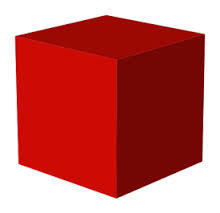Combinatorics Olympiad Problem 6
 A large white cube is painted red, and then cut into 27 identical smaller cubes. These smaller cubes are shuffled randomly.
A large white cube is painted red, and then cut into 27 identical smaller cubes. These smaller cubes are shuffled randomly.
A blind man (who also cannot feel the paint) reassembles the small cubes into a large one. What is the probability that the outside of this large cube is completely red? Express the answer as a decimal (you will certainly have to use scientific notation!).
This problem is not original.This problem is part of this set .
The answer is 1.82980513564150223857321779E-37.
This section requires Javascript.
You are seeing this because something didn't load right. We suggest you, (a) try
refreshing the page, (b) enabling javascript if it is disabled on your browser and,
finally, (c)
loading the
non-javascript version of this page
. We're sorry about the hassle.
2 solutions
- There are 8 corner cubes (3 faces red)
- There are 12 side cubes (2 faces red)
- There are 6 mid-face cubes (1 face red)
-
There is one central cube (no faces red) to make a total of 27 cubes.
-
The chance of correct orientation of a corner cube is 1/8
- The chance of correct orientation of a side cube is 1/12
- The chance of correct orientation of a mid-face cube is 1/6
- Nobody minds which way the central cube is facing (probability 1 it is OK)
We take each of the 27 cube positions working out to the chance it is the correct type of cube multiplied by the chances it is in the correct orientation.
Starting at one corner and working in rows, columns, planes:
Cube 1: 2 7 8 × 8 1
Cube 2: 2 6 1 2 × 1 2 1
Cube 3: 2 5 7 × 8 1
Cube 4: 2 4 1 1 × 1 2 1 ...
The total product will be: 2 7 ! 8 ! 1 2 ! 6 ! 1 ! multiplied by 8 8 1 multiplied by 1 2 1 2 1 multiplied by 6 6 1
which approximates to: 1 . 8 2 9 8 × 1 0 − 3 7
I got this wrong :(. I had the right idea, but got tripped up on the number of orientations on the corner and side cubes. I just assumed there was still 6 possibilities, instead of 8 and 12, doh.
Nice problem though!
Hint: Try to find first the probability that the corner cubes are put into the corners, the face cubes into the faces and the edge cubes into the edges. Then the probability that they have the correct orientation.
Complete answer:
First, number the small cubes to make them distinguishable.
Without taking into account the orientation of the smaller cubes, there are 27! possible ways to reassemble them into a big cube.
There is 1 way to place the center cube correctly
There are 6! ways to place the face cubes correctly
There are 8! ways to place the corner cubes correctly
There are 12! ways to place the edge cubes correctly
So there are 6!8!12! correct cubes (without taking into account the orientation).
Now take such a cube.
The center cube has probability 1 of being in the correct orientation.
Each face cube has probability 1/6 of being in the correct orientation.
Each corner cube has probability 1/8 of being in the correct orientation.
Each edge cube has probability 1/12 of being in the correct orientation
This means that the probability of getting a red cube must be
2 7 ! 6 ! 8 ! 1 2 ! ( 6 1 ) 6 ( 8 1 ) 8 ( 1 2 1 ) 1 2
Which is approximately to 1.8298 × 1 0 − 3 7